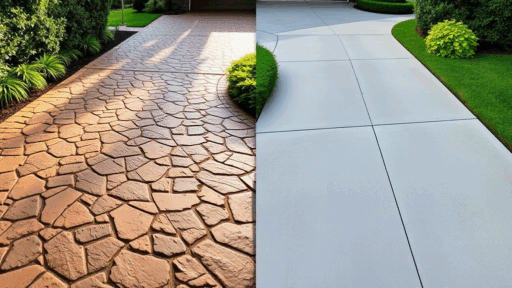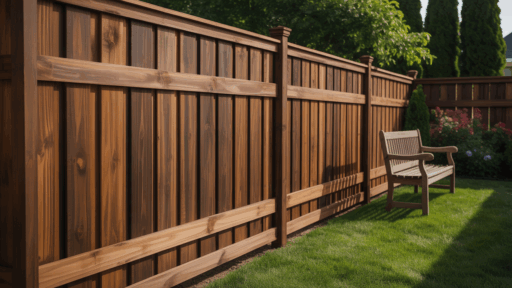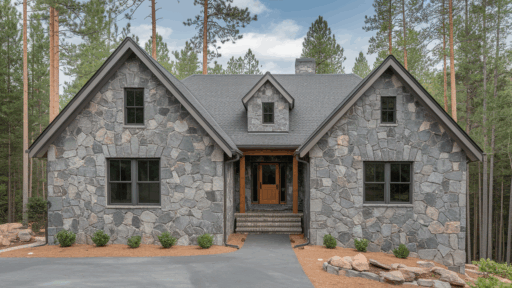Modern Japanese homes have captured the hearts of design enthusiasts worldwide with their stunning simplicity and thoughtful approach to living.
These architectural marvels combine centuries-old traditions with contemporary innovation, creating spaces that feel both timeless and fresh.
The beauty of Japanese-style homes lies in their ability to promote peace and mindfulness through clean lines, natural materials, and open spaces.
From the strategic use of light to the careful selection of textures, every element serves a purpose.
If you’re drawn to their minimalist aesthetic or their connection to nature, modern Japanese architecture offers valuable lessons in creating harmonious living environments that nurture both body and soul.
The Philosophy Behind Contemporary Japanese Architecture
The foundation of modern Japanese home design is rooted in principles that have guided Japanese culture for generations.
These homes embrace the concept of “less is more,” where simplicity becomes the ultimate form of urbanity.
Natural light flows freely through strategically placed windows, creating bright, airy spaces that feel larger than their actual footprint.
The careful selection of materials, such as wood, stone, and glass, helps blur the boundaries between indoor and outdoor living, making inhabitants feel connected to their natural surroundings.
Fun Fact: The concept of minimalism in Japanese architecture dates back to the 15th century with the development of the tea house, where every element was considered to create a serene environment.
Essential Design Elements That Define Modern Japanese Homes
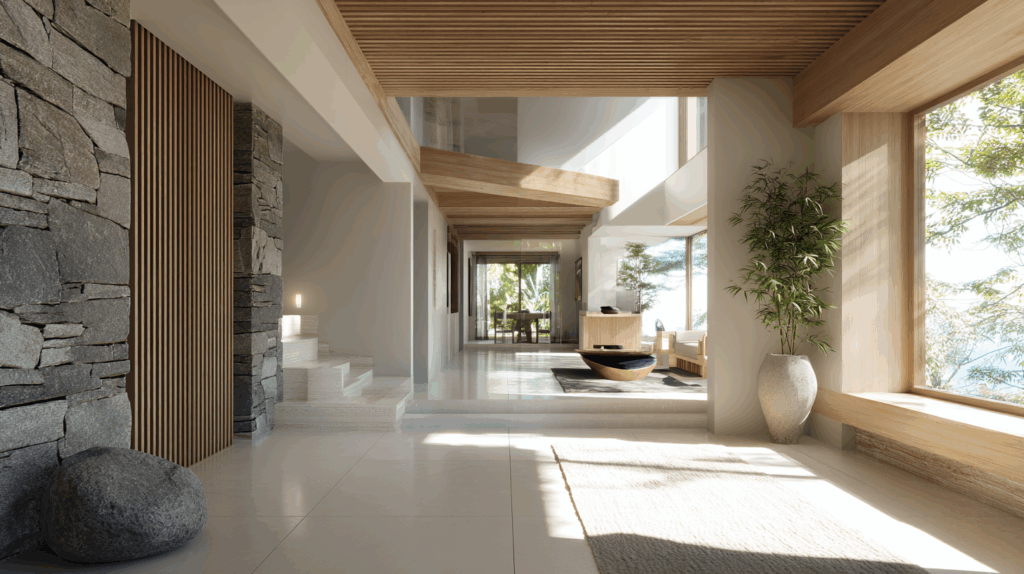
Contemporary Japanese architecture features several distinctive characteristics that set it apart from other design styles:
- Neutral color palettes: Soft whites, warm grays, and natural wood tones create calming atmospheres
- Geometric precision: Clean, straight lines eliminate visual clutter and promote mental clarity
- Natural material integration: Wood, bamboo, and stone bring organic warmth to modern spaces
- Purposeful functionality: Every design choice serves both aesthetic and practical purposes
These elements work together to create homes that feel both suave and approachable, offering residents a sanctuary from the chaos of modern life.
Merging Ancient Traditions with Modern Living
Japanese-style homes excel at honoring cultural heritage while embracing contemporary convenience.
Traditional elements, such as sliding shoji screens and tatami floor mats, find new life alongside modern amenities and open-concept layouts.
This thoughtful integration creates spaces that feel authentically Japanese without sacrificing modern comfort or functionality.
Traditional Elements in Modern Contexts
The beauty of contemporary Japanese design lies in how traditional features adapt to modern needs. Sliding doors that once separated formal rooms now create flexible living spaces that can be reconfigured as needed.
Natural wood finishes, once found in ancient temples, now adorn sleek kitchen cabinets and floating staircases.
Exterior Design: Creating Striking First Impressions
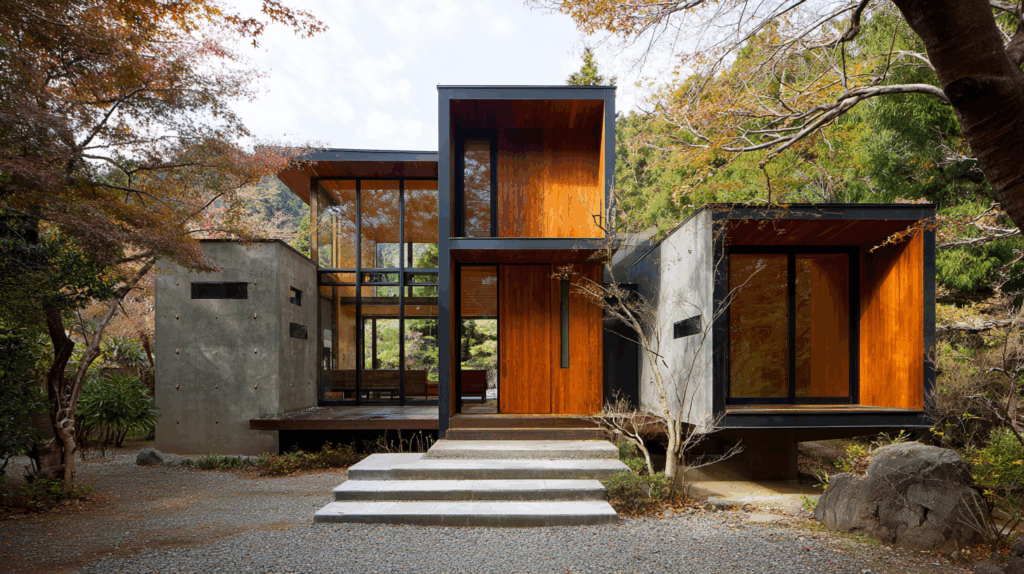
The outside of a modern Japanese home serves as an introduction to the design philosophy within. These structures often feature bold geometric shapes balanced with natural materials that help them blend seamlessly into their surroundings.
| Exterior Feature | Traditional Influence | Modern Application |
|---|---|---|
| Large Windows | Temple openings | Floor-to-ceiling glass panels |
| Natural Materials | Wooden shrines | Concrete and cedar siding |
| Garden Integration | Zen monasteries | Rooftop gardens and courtyards |
| Simple Forms | Tea house architecture | Minimalist cubic structures |
The strategic placement of outdoor elements, such as stone pathways and water features, creates a sense of wandering and finding as visitors approach the home.
Landscaping That Complements Japanese Architecture

The exterior spaces surrounding modern Japanese homes play a crucial role in the overall narrative of the design. These outdoor areas often feature carefully curated elements that promote tranquility and reflection.
Key Landscaping Features
- Zen rock gardens that encourage meditation and contemplation
- Native plant selections that change beautifully with the seasons
- Water elements like small fountains or reflecting pools
- Stone pathways that guide movement through the space
Historical Note: Japanese garden design principles developed over 1,000 years ago continue to influence modern landscape architecture worldwide, emphasizing the importance of balance, simplicity, and natural beauty.
Interior Spaces: Function Meets Beauty
Modern Japanese interiors strike a balance between visual appeal and practical living. Each room serves multiple purposes while maintaining the overall sense of calm and order that defines the style.
1. Kitchen Design Principles

Japanese kitchens prioritize efficiency and cleanliness, boasting smooth surfaces that are easy to maintain and organize.
Natural materials, such as wood and stone, create a warm ambiance, while stainless steel appliances offer modern functionality.
Open shelving displays beautiful dishware and cooking tools, turning everyday items into decorative elements.
Key Design Elements:
- Minimalist storage solutions that keep countertops clear and organized
- Natural wood cabinetry with hidden handles for seamless integration
- Stone or concrete countertops that provide durability and visual appeal
- Strategic lighting placement to illuminate work areas without creating harsh shadows
The following table illustrates how traditional Japanese elements translate into modern kitchen design:
| Kitchen Feature | Traditional Influence | Modern Application |
|---|---|---|
| Open Shelving | Tea ceremony display | Functional storage meets art |
| Natural Materials | Temple woodwork | Warm wood grain cabinets |
| Clean Lines | Shoji screen geometry | Handle-free cabinet doors |
| Efficient Layout | Tea house compactness | Triangle work zones |
This thoughtful integration ensures that modern Japanese kitchens honor cultural heritage while meeting contemporary cooking needs.
2. Living Room Concepts

These gathering spaces feature low-profile furniture that maintains open sight lines and creates a sense of spaciousness.
Floor seating options and coffee tables at various heights accommodate different activities while maintaining visual harmony throughout the room.
Essential Furniture Choices:
- Platform seating with built-in storage to maximize space efficiency
- Modular furniture pieces that can be rearranged for different occasions
- Natural fiber rugs that define spaces without overwhelming the room
- Minimal decorative objects carefully chosen for both beauty and meaning
Understanding the different seating options helps create flexible living spaces that adapt to various activities:
| Seating Type | Height Range | Best Use | Storage Benefit |
|---|---|---|---|
| Floor Cushions | 4-6 inches | Meditation, casual dining | Stackable when not in use |
| Low Sofas | 12-16 inches | Daily relaxation | Under-seat compartments |
| Platform Benches | 14-18 inches | Extra seating, display | Hidden storage within |
| Coffee Tables | 10-14 inches | Multiple activities | Drawer or shelf space |
These varied seating heights create visual interest while maintaining the low profile that characterizes Japanese interior design.
3. Bedroom Sanctuaries
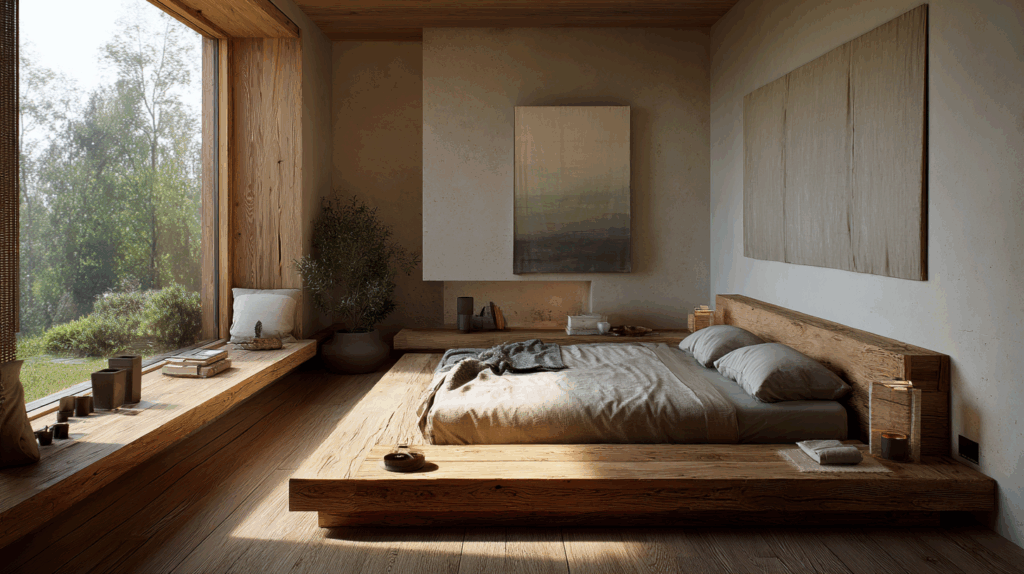
Japanese bedrooms prioritize rest through thoughtful design choices.
Platform beds sit close to the ground, creating a grounding effect that promotes better sleep. Natural fibers in bedding and window treatments add texture while maintaining a clean aesthetic.
Sleep-improving Features:
- Platform bed frames that eliminate the need for box springs and create clean lines
- Built-in nightstands that extend from the bed frame for seamless integration
- Blackout window treatments in natural materials for better sleep quality
- Minimal artwork positioned at eye level when lying down for peaceful viewing
The specifications below demonstrate how each bedroom element contributes to better rest:
| Bedroom Element | Material Choice | Height Specification | Sleep Benefit |
|---|---|---|---|
| Bed Frame | Natural wood or bamboo | 8-12 inches from the floor | Promotes grounding and stability |
| Nightstands | Matching bed materials | Level with the mattress | Easy access without reaching |
| Window Coverings | Linen or cotton | Floor to ceiling | Light control and privacy |
| Storage Solutions | Built-in wood units | Varies by need | Maintains a clutter-free environment |
By following these guidelines, you can create a bedroom that truly serves as a peaceful retreat from daily stress.
Flexible Living Arrangements
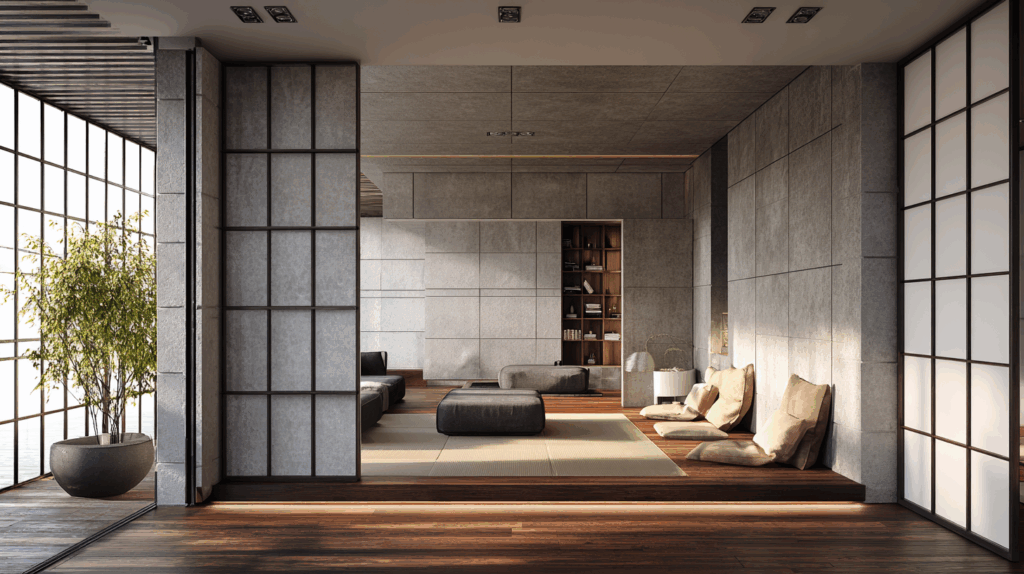
Modern Japanese floor plans often feature movable partitions that allow residents to reconfigure spaces according to their current needs.
A home office can be modified into a guest bedroom, or a large living area can be divided into smaller, more intimate spaces for various activities.
The Art of Space Modification:
- Sliding panel systems that glide silently on ceiling tracks to create instant room divisions
- Folding screen solutions inspired by traditional byōbu that add privacy without permanent walls
- Murphy bed integration that disappears into custom millwork during daytime hours
- Rolling storage units that serve as both furniture and flexible room dividers
The concept of flexible living spaces originated in traditional Japanese homes.
The following comparison shows how traditional and modern approaches achieve similar flexibility goals:
| Space Function | Traditional Method | Modern Innovation | Time to change |
|---|---|---|---|
| Sleeping to Living | Roll up the futon, store the bedding | Murphy bed folds into the wall | 2-3 minutes |
| Private to Open | Slide shoji screens | Ceiling-mounted glass panels | 30 seconds |
| Work to Social | Clear the low table, add cushions | Adjustable height desk, swivel seating | 1-2 minutes |
| Single to Divided | Position folding screens | Activate motorized partitions | 15 seconds |
This innovative approach to spatial design demonstrates that small homes can accommodate large living spaces when every square foot adapts to changing needs throughout the day.
Environmental Responsibility in Design
Sustainability plays a vital role in contemporary Japanese architecture, reflecting the culture’s deep respect for nature and resources.
These homes often incorporate renewable energy sources, such as solar panels, and utilize locally sourced materials to minimize their environmental impact.
Natural ventilation systems reduce the need for artificial climate control, while green roofs provide insulation and create habitat for local wildlife.
Water collection systems and native landscaping further reduce the home’s ecological footprint.
Fun Fact: Traditional Japanese building techniques often used materials that could be completely recycled or returned to nature at the end of the structure’s life, a principle that continues to influence modern sustainable design.
Bringing Japanese Design Into Your Space
You don’t need to build a new home to bring Japanese design into your space.
Simple changes, such as decluttering, using natural materials, and improving outdoor connections, can change any home.
Swap heavy window treatments for light panels, choose furniture with clean lines, and create designated spaces for specific activities.
These minor adjustments can bring a sense of peace and order. Modern Japanese homes teach us how to create functional, beautiful spaces that nurture both body and spirit.
Embrace the principles of simplicity, natural beauty, and mindfulness to create a serene haven at home.
Start modifying your space with one Japanese design principle today!





